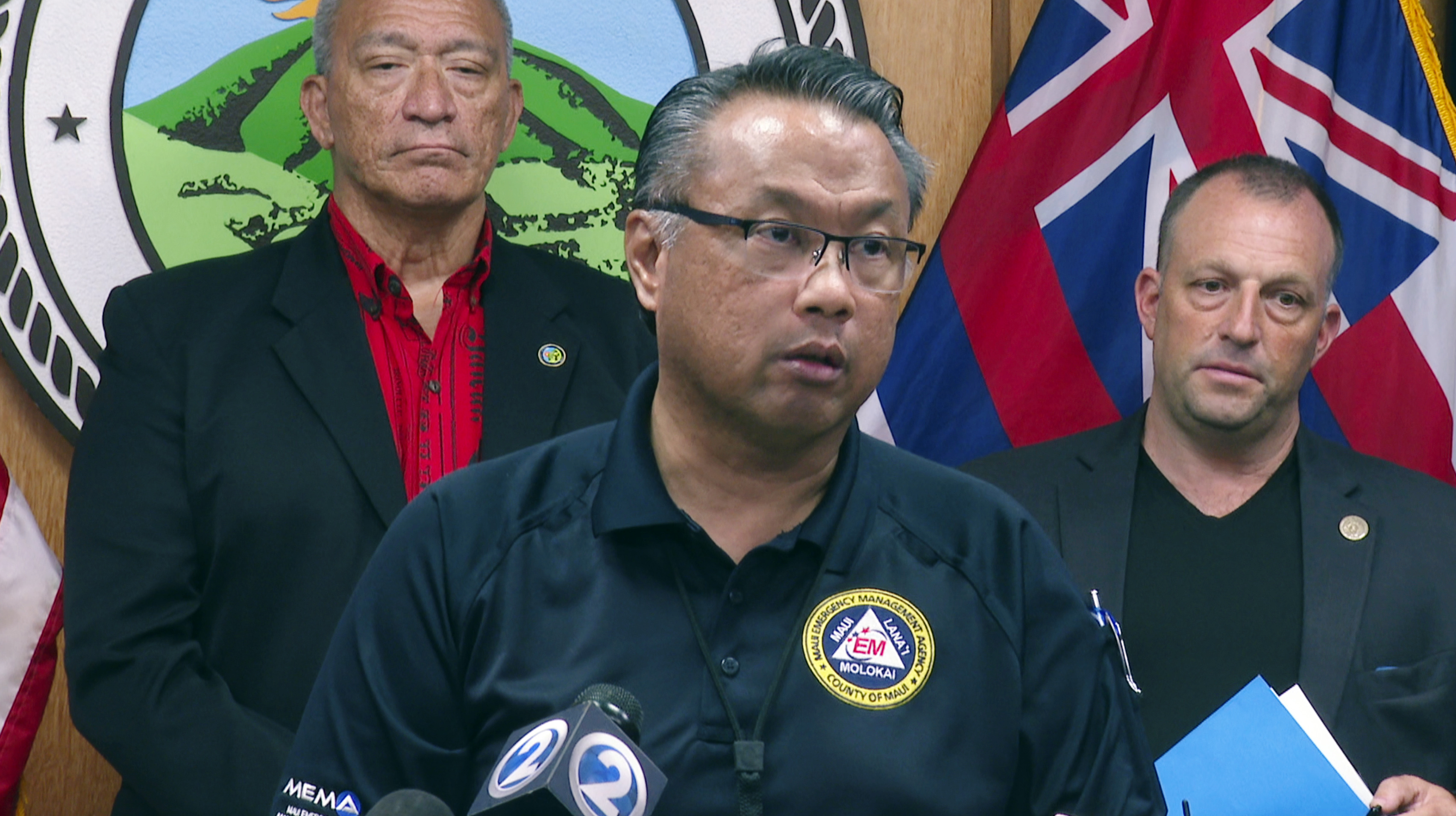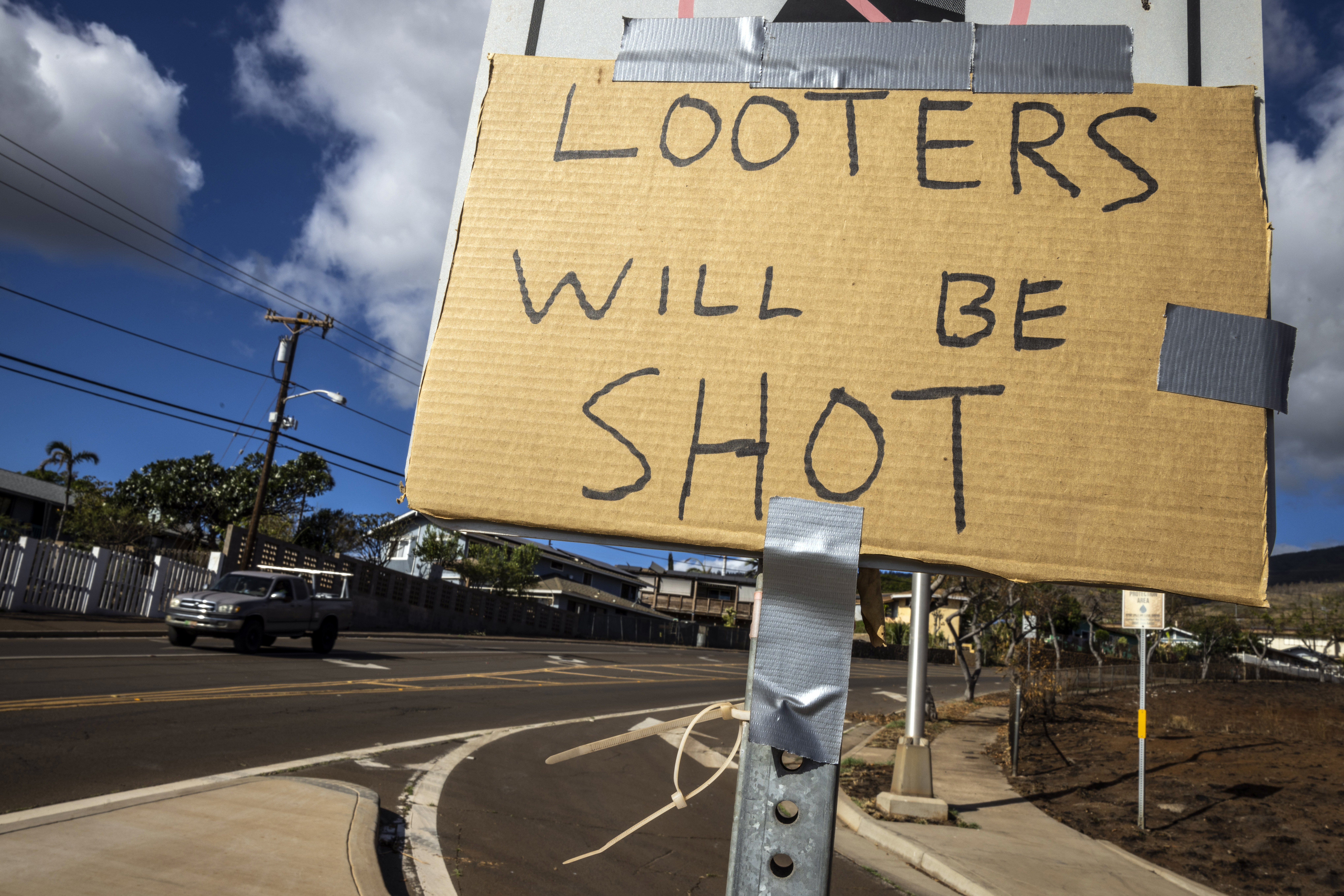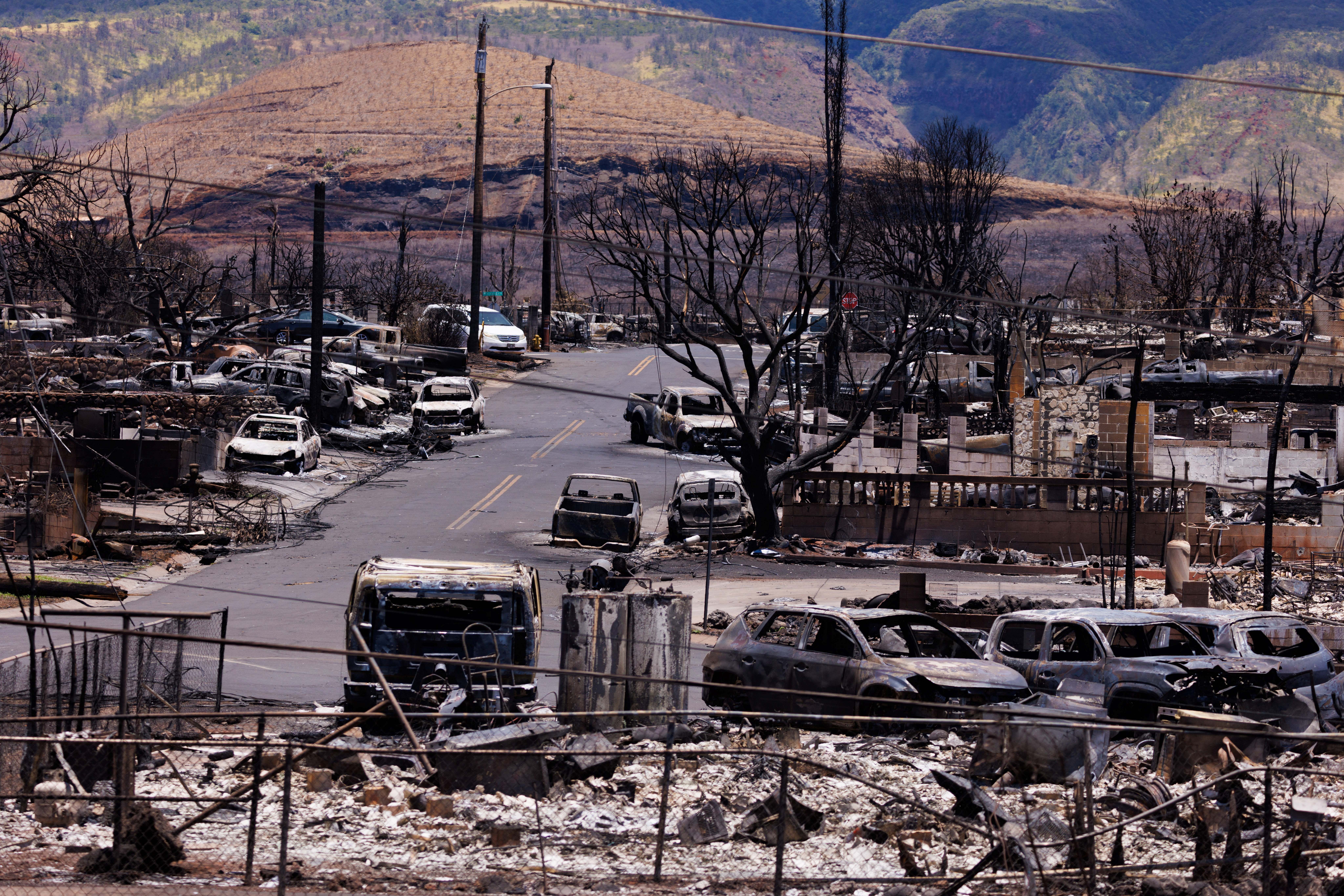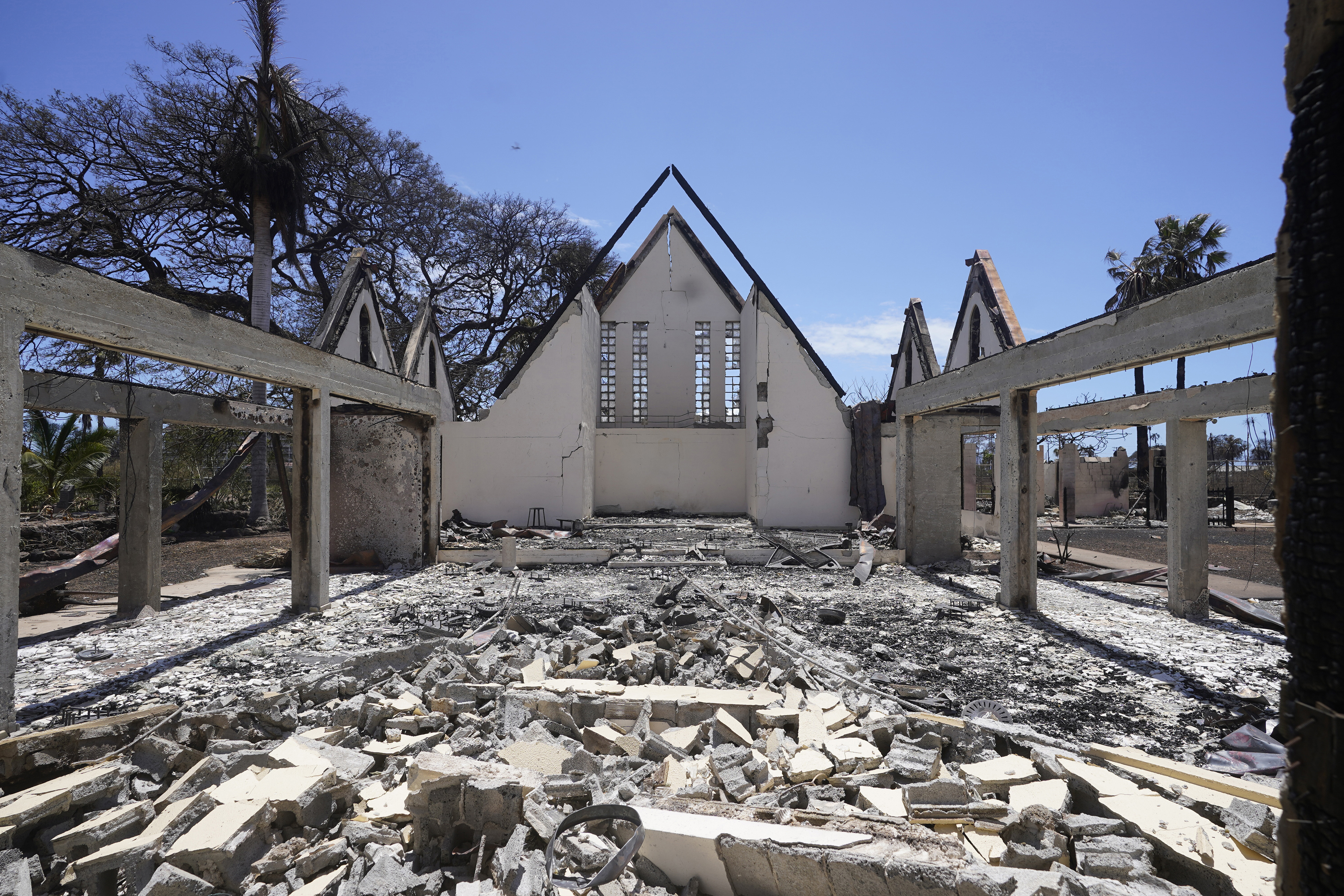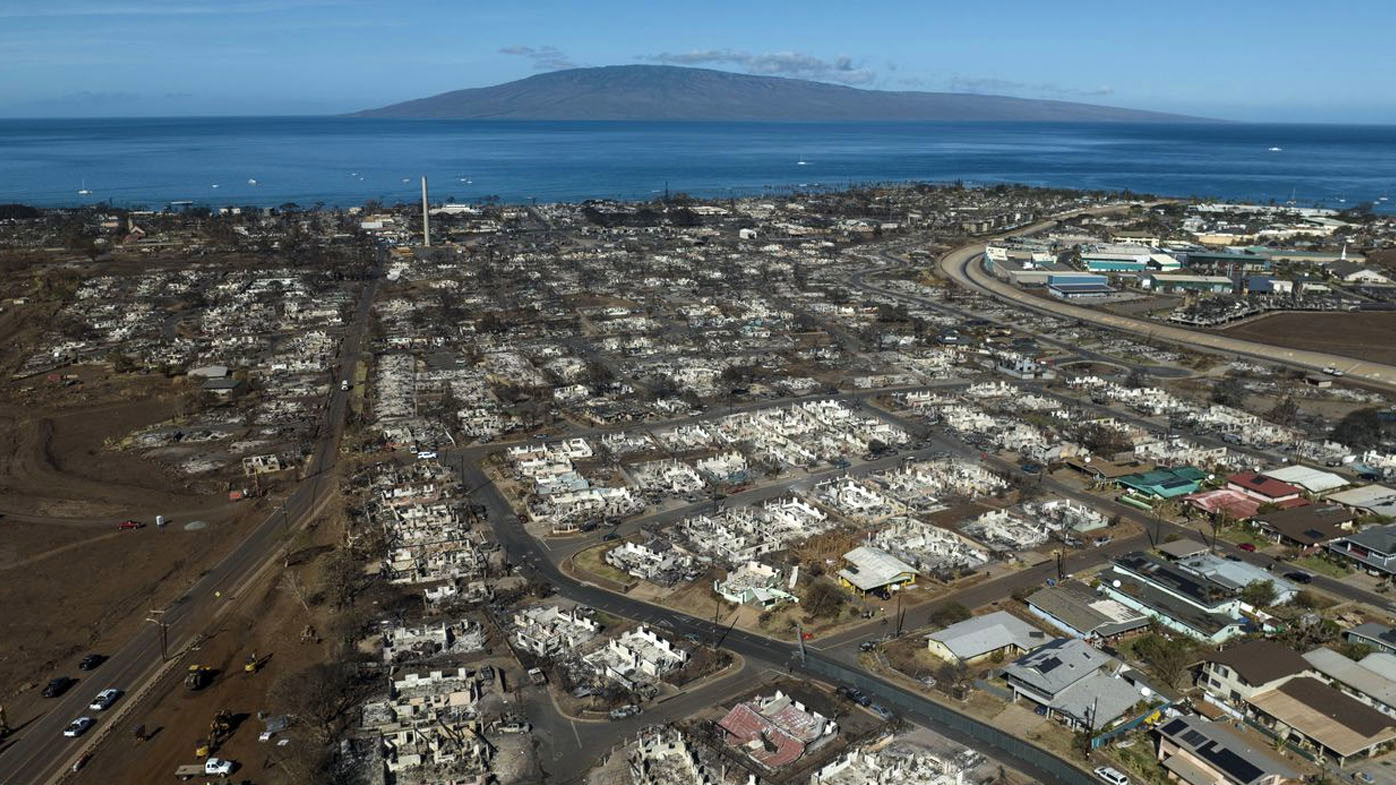The head of Maui's emergency management agency has resigned, citing health reasons, a day after he defended the silence of the island's siren system last week during the deadliest US wildfire in more than 100 years.
No details were released about Maui Emergency Management Agency Administrator Herman Andaya's health. His resignation was effective immediately, and his role will be filled "as quickly as possible," Maui County Mayor Richard Bissen said.
The death toll from the wildfires that ignited August 8 has increased to at least 114 people – including children – mostly around Lahaina, an economic and cultural hub obliterated by the infernos.
READ MORE: Up to 1000 still missing after Maui's catastrophic wildfires
The number of people killed is expected to rise as searchers – many grieving their own fire losses – keep digging through the charred remains of more than 2000 burned homes and businesses. "Probably still over 1000" residents remain unaccounted for, Hawaii Governor Josh Green told CNN on Wednesday.
Now, scrutiny is mounting over the official wildfire preparations and response, including the role of the local electricity provider and the siren system.
As the deadly fires spread, no one tried to activate Maui's 80-alarm, all-hazard outdoor siren system, a spokesperson for the Hawaii Emergency Management Agency said last week.
Andaya was asked Wednesday whether he regretted not sounding the alarms, which are part of a larger statewide network.
"I do not," he told reporters, saying he worried their alarms would have sent many residents inland "into the fire."
READ MORE: Maui fires death toll passes 100 but most remains are unrecognisable
Before Andaya's resignation was announced, state Senator Angus McKelvey – who represents Lahaina and lost his own home in the fires – blasted Andaya's response as "insulting".
"I've heard the line that people would have panicked and ran up to the mountains because it's a tsunami siren. It's insulting to think that people would be that clueless, that they wouldn't know that sirens blasting was because of the fire," McKelvey told CNN on Thursday.
"These are not tsunami sirens. They're disaster sirens."
It's still not clear why the siren system wasn't used. Narratives about its silence have shifted, with Green telling CNN some sirens were broken.
The governor has asked the state attorney general to review the fire and officials' response, including the alarms' silence.
Feds will help investigate as fires rage on
The Bureau of Alcohol, Tobacco, Firearms and Explosives' National Response Team will help local authorities determine the cause of the disaster, the agency said in a statement.
The team includes "one electrical engineer from the ATF Fire Research Laboratory, two Certified Fire Investigators (CFI) and a CFI candidate from the Honolulu Field Office, and one Arson and Explosives Group Supervisor from the Seattle Field Division," the statement said.
The most destructive blaze on Maui, the 884-hectare Lahaina fire, was 90 per cent contained as of Thursday night, Maui County posted on Facebook.
Other wildfires still burning on Maui island include the 437-hectare Olinda fire, which was 85 per cent contained as of Thursday night, and the 82-hectare Kula fire, which was 80 per cent contained, according to Maui County.
It will be a "multi-year operation" to respond to the wildfires on Maui, the commander of the military's task force said Friday – a process that's only in its earliest stages.
The focus right now is to locate and identify human remains in the area affected by the fire, according to Brig. Gen. Stephen Logan, commander of Combined Joint Task Force 5-0, which is coordinating the Defense Department's response.
"We want to be able to treat them in a dignified manner and give some closure to the families," Logan told reporters on a call on Friday afternoon.
READ MORE: Fury after powerlines suggested as cause for Maui wildfires
Crews have searched roughly 45 per cent of the 13-square-kilometre area affected, Maui County's mayor told CNN on Thursday.
Combing the ashes of what used to be homes, businesses and historic landmarks has been arduous. And identifying those killed won't be easy, as remains are largely unrecognisable and fingerprints rarely found, the governor said.
Authorities have asked relatives of the missing to provide DNA samples so a genetics team can help identify remains.
At least 40 canines from 15 states have joined in the search, said Jeff Hickman of the Hawaii Department of Defense.
The next phase will be to make sure the area affected by the fire has been deemed safe. The fire tore through both residential and industrial areas, leaving the risk for different types of hazards across the sites.
"Each one may have some type of propane tank, there could be some type of live electricity rolling through, some other utilities, there could be paints, thinners, hazardous materials that were used in the construction of the building that has now been consumed by fire," Logan said.
Only after areas are deemed safe can emergency responders allow locals to return to their homes and businesses to see what can be salvaged.
Power company faces scrutiny
While the cause of the fires hasn't been determined, Hawaiian Electric – the major power company on Maui – is under scrutiny for not shutting down power lines when high winds created dangerous fire conditions.
And a company that runs a sensor network on Maui detected major utility grid faults hours before the fires started, it said.
Hawaiian Electric said publicly in 2019 it would and determine how to help keep residents and infrastructure safe. But between 2019 and 2022, Hawaiian Electric invested less than $245,000 on wildfire-specific projects, according to The Wall Street Journal, citing regulatory filings.
Hawaiian Electric also didn't seek state approval to raise rates to pay for safety improvements until 2022, and the rate hike has yet to be approved, the Journal reported.
The company has spent roughly $84 million since 2018 on maintenance and vegetation management in Maui County, including trimming and cutting down trees and upgrading equipment, it told CNN in a statement.
"There are many elements of wildfire mitigation that don't get counted specifically as mitigation activities, including vegetation management, grid hardening and pole replacement and routine line and equipment inspections," the company said.
A sensor network run by Whisker Labs detected an "increasingly stressed utility grid" on Maui beginning late August 7 and into the next morning, the company's CEO Bob Marshall told CNN on Wednesday.
"Through the overnight hours, when all the fires ignited, we measured 122 individual faults on the utility grid," Marshall said. A fault – a short circuit or partial short circuit – could cause electric current to leave its intended path, which could lead to a fire, Marshall said.
READ MORE: Tourists told 'keep out' as Maui communities reel
Video taken at the Maui Bird Conservation Center in Makawao appears to show a power pole faulting just before 11 p.m. on August 7. Soon after, what appears to be flames are seen in the video, first reported by The Washington Post.
The sensor system provided "verification that, indeed, this was very likely caused by a fault on the utility grid," Marshall said.
The Makawao fire was hours before and miles away from the fire that decimated the historic portions of Lahaina in Western Maui. But sensors detected faults on the grid before that fire, too, Marshall said.
A class-action lawsuit filed over the weekend alleges the wildfires were caused by Hawaiian Electric's energised power lines that were knocked down by strong winds.
The company and its subsidiaries "chose not to deenergise their power lines after they knew some poles and lines had fallen and were in contact with the vegetation or the ground," the suit alleges.
Firefighters battled blazes as their own homes burned
When ferocious winds hurled flames across and quickly overwhelmed crews on August 8, some firefighters knew their own homes could burn.
"The people that were trying to put out these fires lived in those homes – 25 of our firefighters lost their homes," Bissen said Wednesday.
Now, some search crew members are working despite immense personal grief.
"Realise that the responders that are going out there are recovering their loved ones and members of their families," Pelletier said.
READ MORE: Bright symbol on buildings signal search for bodies after deadly fires
Maui firefighter Aina Kohler was on the front lines that day and stuck to her mission to save lives – even as her house burned to the ground, she told CNN affiliate KITV. By the time flames reached her home, she said, firefighters had run out of water.
"That was honestly the most disheartening thing of my life. I felt the supply, and I'm like: It's limp. Just leaving a house to burn because we don't have enough water is like something I've never experienced before," she said.
Two of Kohler's fellow firefighters also lost their homes while battling the fires, she said.
"They watched their homes burn as they fought the fire for other homes in their neighborhood," Kohler said. "That hit really hard."


